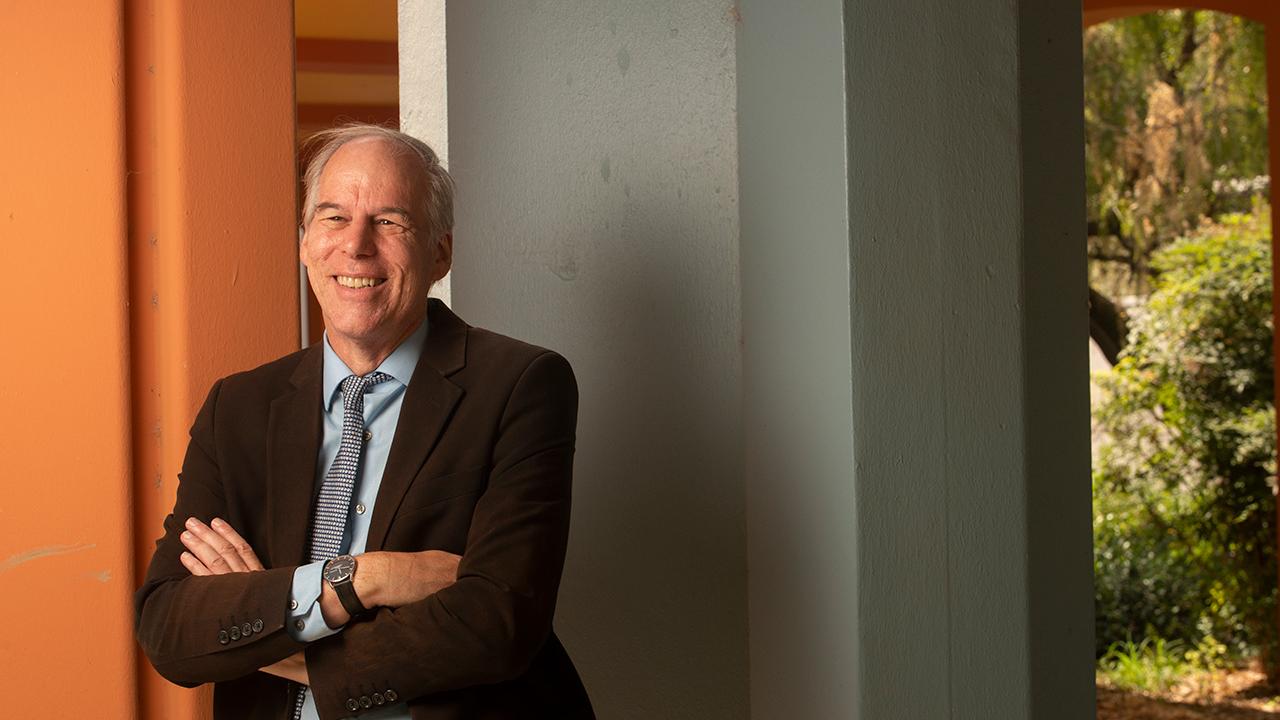
Alan Templeton is no stranger to the UC Davis campus. The alum spent his undergraduate years exploring the Quad and combing through art history books in Shields Library. Templeton (B.A., art history and psychology, ‘82) has worked as a professional artist, labor union administrator and investor. He’s an art collector and is passionate about helping elevate and grow the arts and humanities at UC Davis.

So much so that, in 2021 he won the UC Davis Medal for his extraordinary contributions to the campus community.
His philanthropy has led to the creation of the Templeton Colloquium in Art History, the Templeton Endowment for the Arts and Letters, the Alan Templeton Distinguished Speaker Series for Foreign Literature and Cultures, and the Templeton Endowed Chair in the History of European Art, 1600–1830, currently held by Professor Michael Yonan.
Templeton recently returned to campus to give a free public lecture called “Observations of the Art Trade.” During the event at the Jan Shrem and Maria Manetti Shrem Museum of Art, Templeton gave insight and encouragement to students interested in art history, the business of art and museum curation.
Primarily using examples from Europe and Africa, he gave an overview of the art trade from the 18th century onwards, including how much different notable pieces went for on the market — and what they may be valued at now.
"I will try to demystify this fascinating and quirky market, which is unlike any other I have encountered," Templeton said ahead of his lecture. "It has a mixture of glamor, hubris and intellectual depth that is striking. It is also tremendously fun, with surprises and discoveries every year, and populated by many strong personalities."
Learn more about Templeton’s ties to the UC Davis campus in this Q&A.
Q: How do you think public perception of the art trade differs from reality?
A: Unfortunately, journalists who cover the art trade tend to focus on the most expensive works sold at public auction, giving the impression that bad art is expensive, and that good art is even more expensive! There are also several fraud scandals uncovered each year which rightly attract attention.
What you don't see in these articles are the many good art dealers and auction house specialists who offer good works at fair prices every month. However, many active buyers in any niche of the art market are often competing for the same small number of works that fit their taste and current aspirations. This can lead to dramatically high prices.
But keep in mind that the average sale price per lot last year at Sotheby's, Christie's and Phillips, three leading auction houses, was only $14,200. And if you come to my talk, you will see several beautiful works that were available for much less than that, as well as several that sold for very high prices.
Q: What makes someone a “collector” of art? When did you start calling yourself a collector?
A: If you have any art at home that you did not make yourself, you are a collector. If you have ever given a museum any art, or helped them buy something for the collection, you are also a collector.
The word conjures up the wealthiest people in the world. You don't have to be wealthy to be a collector. I started buying art with the Crocker Art Museum in mind in 2000. Soon after, I realized I was a collector because it was so much fun improving the museum's collection. Enhancing the cultural life of Northern California has always been my primary goal.
Q: What was it about 18th-century European art that first drew you to it?
A: I had a truly inspiring teacher at Boston University named Alice Binion. I did a year of graduate work in art history there and I also worked at their art gallery. Professor Binion changed my life because she showed me how profoundly interesting and overlooked 18th-century Europe was, culturally and intellectually. She was a breath of fresh air.
Q: Why do you continue to have this passion for it?
A: I love many kinds of art, but I keep coming back especially to the 17th, 18th and early 19th centuries in Europe because there were so many talented artists who were highly skilled, tremendously inventive, very sophisticated in their compositions and able to bring stories and figures to life both from history and from their own surroundings with such brio and imagination.
It has to do with beauty, intellect and emotional depth. But every time and culture produces visual art, and so I try to keep an open mind. We can learn so much from the past.

Q: How did your UC Davis education influence your passion for the arts and humanities – and the way you experience art?
A: I had a number of stellar teachers at UCD. They challenged me and shared their enthusiasm. Two art history teachers who really helped me develop my mind and my eye were Jeff Ruda and Robert Grigg. I also had a terrific psychology professor, Ted Parks, who showed me how nuanced and changeable are visual perception and memory. They all helped me to join a larger world of ideas and to become a more active and engaged viewer.
Q: When you were a student here, what was your favorite place to visit? What is it now?
A: I love the Quad, especially when it is largely empty and quiet, and I love the part of the library with all the art history books. I would gather art books to search through and sit at the nearby desks with a view of the outside. I love Shields Library, then and now.
